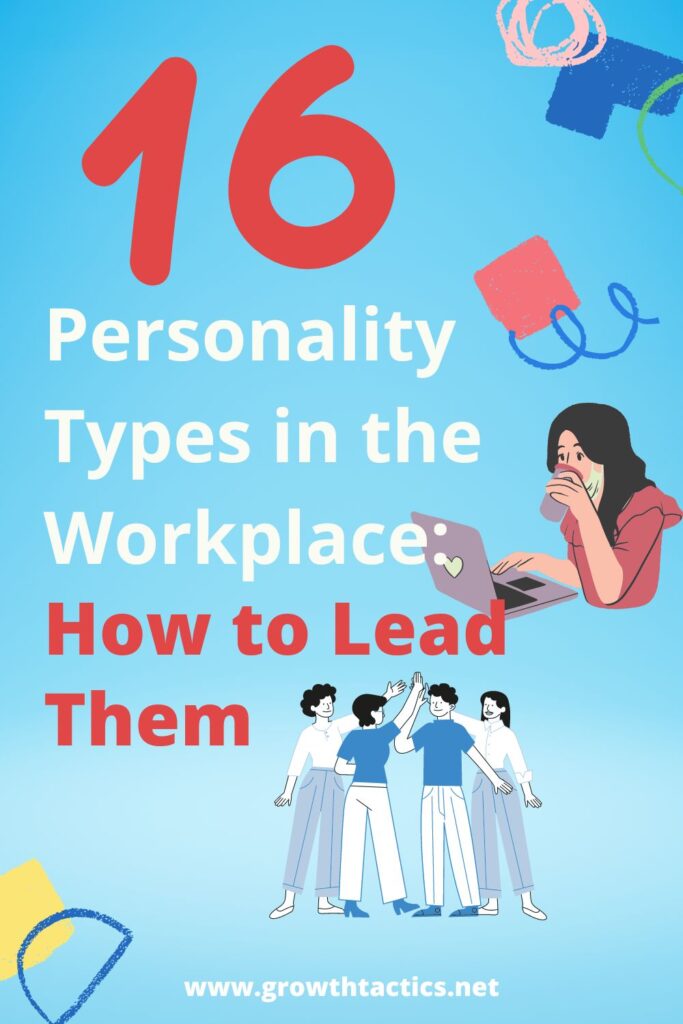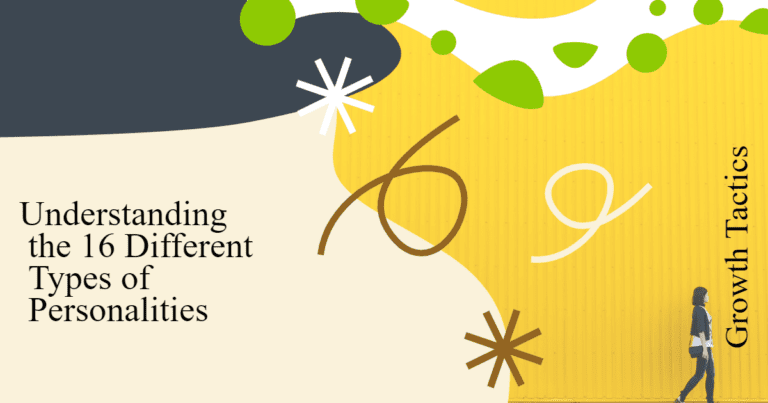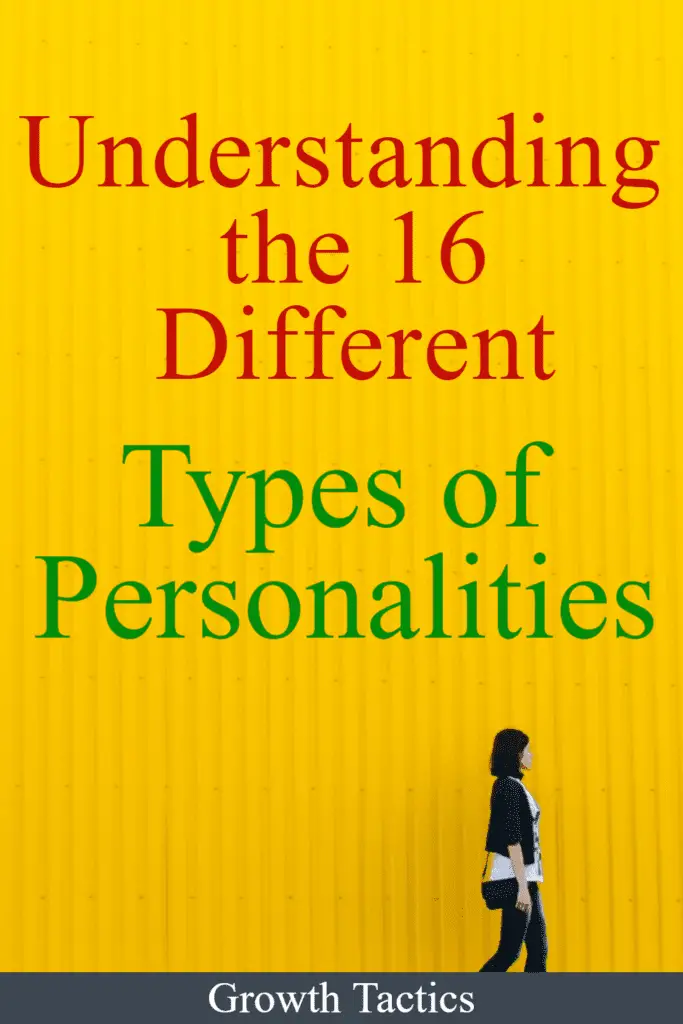Every individual has a unique personality that shapes their behavior, thoughts, and emotions. There are various types of personality traits that can be used to categorize people based on their characteristics. One of the most popular personality models is the 16 personality types, which is based on the Myers-Briggs Type Indicator.
Jump To Section
Personality Types

Personality types are a way of categorizing individuals based on their unique combination of personality traits. The 16 personality types are based on the Myers-Briggs Type Indicator (MBTI), which is a widely used personality assessment tool. The MBTI is based on the theory that there are four main dimensions of personality, each with two opposing poles. These dimensions are:
Extraverted (E) vs. Introverted (I)
Extraversion (E) vs. Introversion (I) is one of the most well-known personality dimensions. Extraverts tend to be outgoing, sociable, and energized by being around others. They enjoy being the center of attention and often thrive in social situations. Extraverts tend to be talkative, assertive, and confident, and they may have many friends and acquaintances. They often enjoy trying new things and taking risks, and they may be more likely to seek out excitement and stimulation.
On the other hand, introverts tend to be more reserved, reflective, and energized by being alone. They may prefer to spend time reading, thinking, or pursuing solitary hobbies. Introverts tend to be more introspective and may be more focused on their inner thoughts and feelings. They may have a smaller circle of close friends and may prefer deeper, more meaningful conversations over small talk. Introverts may also be more sensitive to external stimuli and may become overwhelmed in noisy or crowded environments.
Sensing (S) vs. Intuition (N)
Sensing (S) vs. Intuition (N) is another important dimension of personality. Sensing types tend to focus on concrete facts and details. They are often very observant and may have a good memory for details. Sensing types tend to be practical and down-to-earth, and they may prefer to focus on the present rather than thinking about the future. They may enjoy hands-on activities and may be skilled at tasks that require attention to detail, such as cooking or woodworking.
On the other hand, intuitive types tend to focus on abstract concepts and possibilities. They may be more interested in ideas and theories than in concrete details. Intuitive types tend to be imaginative and creative, and they may enjoy exploring new ideas and possibilities. They may be more comfortable with ambiguity and uncertainty than sensing types and may be more willing to take risks. Intuitive types may also be more likely to think about the future and may be interested in planning and strategizing.
Thinking (T) vs. Feeling (F)
Thinking (T) vs. Feeling (F) is another dimension of personality that describes how individuals make decisions. Thinking types tend to make decisions based on logic and objective analysis. They may be skilled at analyzing data and may enjoy solving complex problems. Thinking types tend to be objective and rational, and they may be less influenced by emotions when making decisions. They may be more focused on achieving their goals and may be willing to make tough decisions, even if they are unpopular.
On the other hand, feeling types tend to make decisions based on personal values and emotions. They may be more empathetic and sensitive to the feelings of others. Feeling types tend to be more subjective and may be more influenced by their emotions when making decisions. They may be more concerned with maintaining harmony and may be more willing to compromise in order to avoid conflict. Feeling types may also be more interested in building relationships and may prioritize the needs of others over their own goals and objectives.
Judging (J) vs. Perceiving (P)
Judging (J) vs. Perceiving (P) is another dimension of personality that describes how individuals approach the external world. Judging types tend to be organized, decisive, and prefer structure and routine. They may be skilled at planning and may enjoy creating schedules and to-do lists. Judging types tend to be goal-oriented and may be more comfortable when they have a clear plan of action. They may be less comfortable with uncertainty and may prefer to have things settled and predictable.
On the other hand, perceiving types tend to be flexible, spontaneous and prefer to keep their options open. They may be skilled at adapting to changing circumstances and may be more comfortable with uncertainty. Perceiving types tend to be more open-minded and may be more willing to explore new ideas and possibilities. They may be less concerned with planning and may prefer to go with the flow. Perceiving types may also be more comfortable with ambiguity and may be more willing to take risks.
Myers-Briggs
The Myers-Briggs Type Indicator is a personality test that helps individuals identify their personality type based on the 16 personality types. It measures how individuals perceive the world and make decisions based on their personality traits. The test is based on the work of Carl Jung and was developed by Isabel Briggs Myers and her mother, Katharine Cook Briggs.
Based on these four dimensions, the MBTI assigns individuals to one of 16 different personality types, each represented by a unique combination of letters. For example, an ENTP is an extroverted, intuitive, thinking, and perceiving type, while an ISFJ is an introverted, sensing, feeling, and judging type.
Each of the 16 personality types has its own strengths, weaknesses, and tendencies. For example, ENTPs are known for their creativity, intellectual curiosity, and ability to see multiple perspectives, but may struggle with follow-through and consistency. ISFJs, on the other hand, are known for their practicality, loyalty, and attention to detail, but may struggle with adapting to change and taking risks.
Understanding your own personality type can help you better understand your strengths and weaknesses, as well as how you interact with others. It can also help you identify potential career paths that align with your personality type and work style. However, it’s important to remember that personality types are just one aspect of a person’s identity and should not be used to stereotype or label individuals.
Personality Traits
Personality traits are enduring patterns of thought, feeling, and behavior that are relatively stable over time and across situations. These traits are thought to be influenced by a combination of genetic, biological, and environmental factors.
There are many different personality traits that have been identified and studied by psychologists. Some of the most commonly studied traits include:
- Extraversion: This trait refers to the degree to which an individual is outgoing, sociable, and assertive. Extraverts tend to be energized by social interactions and enjoy being around others.
- Neuroticism: This trait refers to the degree to which an individual experiences negative emotions such as anxiety, sadness, and anger. People who score high in neuroticism tend to be more sensitive to stress and may have a tendency to worry or ruminate.
- Openness to experience: This trait refers to the degree to which an individual is open to new experiences, ideas, and ways of thinking. People who score high in openness tend to be creative, curious, and imaginative.
- Agreeableness: This trait refers to the degree to which an individual is cooperative, compassionate, and empathetic. People who score high in agreeableness tend to be more trusting and considerate of others.
- Conscientiousness: This trait refers to the degree to which an individual is organized, responsible, and reliable. People who score high in conscientiousness tend to be more goal-oriented and disciplined.
The Big Five personality traits model is a widely used framework for categorizing personality traits. This model proposes that there are five broad dimensions of personality that can be used to describe individuals: openness, conscientiousness, extraversion, agreeableness, and neuroticism. Each of these dimensions is further divided into specific facets or sub-traits.
Type A and Type B Personalities
Type A and Type B personalities are two main personality types that are often used to categorize individuals. Type A personalities are highly competitive, ambitious, and always striving for success. They tend to be workaholics and are always on the go. Type B personalities, on the other hand, are more relaxed and laid back. They prefer to work independently and are not as focused on achieving success as Type A personalities.
Dealing With Type A/Type B Personalities
Dealing with different personality types can be a challenge, especially when it comes to Type A and Type B personalities. Here are some tips for interacting with these two types:
Type A Personalities:
- Be direct and to the point: Type A personalities are often very goal-oriented and focused on getting things done quickly and efficiently. They may not have a lot of patience for small talk or beating around the bush.
- Respect their time: Type A personalities value their time and may become frustrated if they feel like their time is being wasted. Try to be punctual and prepared for meetings or appointments.
- Be prepared for conflict: Type A personalities can be competitive and may not back down easily in a disagreement. Be prepared to stand your ground and present your case clearly and logically.
- Don’t take their intensity personally: Type A personalities can come across as intense or even aggressive at times. Remember that this is just their personality style and try not to take it personally.
Type B Personalities:
- Be patient: Type B personalities tend to be more laid-back and relaxed, so they may not be in a hurry to get things done. Be patient and give them the time they need to make decisions or complete tasks.
- Be flexible: Type B personalities may not be as rigid or structured as Type A personalities, so they may be more open to changing plans or trying new things. Be flexible and open to their ideas.
- Avoid conflict: Type B personalities tend to be more conflict-averse than Type A personalities. If a conflict does arise, try to approach it calmly and respectfully to avoid escalating the situation.
- Respect their need for downtime: Type B personalities value their downtime and may need more breaks or time to recharge than Type A personalities. Respect their need for rest and relaxation.
Remember that everyone is unique and has their own personality style. By understanding and respecting the differences between Type A and Type B personalities, you can build better relationships and work more effectively with others.
How to Use Your Personality Type to Your Advantage in the Workplace
Understanding your personality type can be a powerful tool in leveraging your strengths, improving your relationships with colleagues, and thriving in your career. Here’s how you can use the insights from the Myers-Briggs Type Indicator (MBTI) and other personality frameworks to your benefit at work.
Extraverted (E) vs. Introverted (I)
Extraverted (E):
- Networking: Use your natural sociability to build a wide professional network. Engage in events, meetings, and team activities to connect with others.
- Leadership: Utilize your confidence to motivate and lead teams by being a visible, active presence in your organization.
Introverted (I):
- Deep Work: Leverage your ability to focus and work independently to excel in tasks requiring concentration and creativity.
- Thoughtful Contributions: Prepare for meetings by organizing your thoughts in advance, allowing you to share insightful, well-considered input.
Sensing (S) vs. Intuition (N)
Sensing (S):
- Attention to Detail: Use your practical and detail-oriented nature to manage projects where precision is crucial, such as data analysis or quality control.
- Routine Tasks: Excel in roles that require consistency and routine, providing stability and reliability within your team.
Intuition (N):
- Innovation: Embrace your creative thinking to drive innovation and explore new opportunities for growth within your organization.
- Strategizing: Utilize your tendency to think about the future to contribute to strategic planning and long-term vision discussions.
Thinking (T) vs. Feeling (F)
Thinking (T):
- Problem Solving: Use your logical approach to tackle complex problems and make decisions based on data and critical analysis.
- Objective Feedback: Provide constructive feedback that emphasizes improvement and efficiency, aiding team development.
Feeling (F):
- Building Relationships: Foster a harmonious work environment by empathizing with colleagues and supporting team morale.
- Value-Driven Decisions: Use your values to guide decisions that enhance team well-being and contribute to a positive company culture.
Judging (J) vs. Perceiving (P)
Judging (J):
- Planning: Your preference for structure makes you excellent at planning and organizing projects, setting clear goals, and meeting deadlines.
- Decisiveness: Use your decisiveness to drive projects forward, moving from planning to execution without delay.
Perceiving (P):
- Adaptability: Excel in dynamic environments where flexibility is key, and unexpected changes are frequent.
- Creative Solutions: Your openness to new experiences can lead to innovative solutions and a fresh perspective on challenging projects.
By embracing your personality type, you can enhance your professional development, improve teamwork, and contribute positively to your workplace environment. Remember, understanding others’ personality types can also help you adapt your communication style and approach, leading to more effective collaboration and job satisfaction.
Idealist and Realist Personalities
Idealist and realist personalities are two different personality types that describe how individuals view the world. Idealists are individuals who are highly perceptive and thoughtful, and they tend to have a strong sense of empathy. They are always looking for ways to bring out the best in others and are highly motivated to make a positive impact on the world. Realists, on the other hand, are more practical and focused on what is happening in the present. They tend to be more skeptical and are not as motivated by idealistic goals.
In conclusion, there are many different types of personalities, and each individual has a unique set of personality traits that shape their behavior and thoughts. Understanding your personality type can help you better understand yourself and your interactions with others, and can ultimately lead to greater personal and professional success.
Did you find this article on different personality types useful? Don’t forget to share and subscribe.



